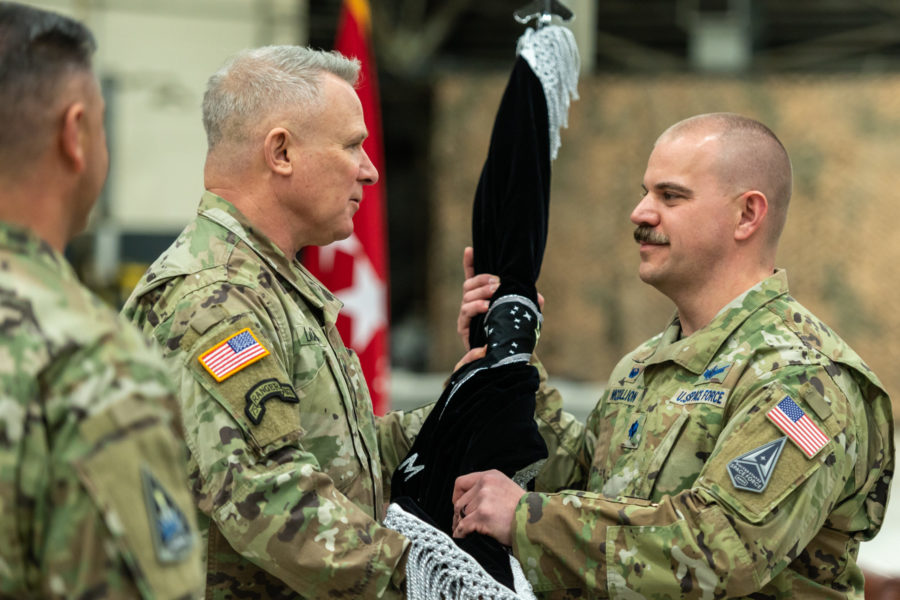The U.S. military activated its newest Space Force component in South Korea on Dec. 14 as the young service pushes forward toward gaining parity with its older counterparts.
In a ceremony at Osan Air Base, South Korea, U.S. Space Forces Korea was activated, adding the Space Force as the newest component command for U.S. Forces Korea. The commander of U.S. Space Forces Korea, or SPACEFOR-KOR, is Lt. Col. Joshua McCullion, who previously was the Director of Space Forces for the Seventh Air Force in Korea.
“With the world around us evolving, so, too, must we,” McCullion said in a speech at the ceremony.
The command is subcomponent of U.S. Space Forces Indo-Pacific, which was established just three weeks earlier and is headed by Brig. Gen. Anthony J. Mastalir.
The move comes at a time of heightened tensions on the Korean Peninsula, particularly in areas U.S. Space Forces Korea is now responsible for, such as missile warning.
North Korea has launched a barrage of ballistic missile tests in 2022, and leader Kim Jong Un has stated he plans to advance his country’s ballistic missile prowess and its nuclear weapons program.
“Just 48 miles north of us exists an existential threat—a threat that we must be prepared to deter, defend against, and, if required, defeat,” McCullion said, referring to North Korea.
In addition to the missile warning functions, U.S. Forces Korea says SPACEFOR-KOR will support position, navigation, and timing and satellite communications within the region, some of the core functions the Space Force performs for all U.S. forces.
“In the last 60 years, space capabilities have become essential to the way a modern military conducts operations,” Gen. Paul J. LaCamera, the commander of U.S. Forces Korea, said at the ceremony. “Many nations have advanced their space capabilities and are looking to deny access to this critical domain.”
North Korea was “developing assets to negate American advantages,” LaCamera said.
U.S. Central Command recently set up its own space component, and a Space Force outfit for U.S. European Command is also planned.
But the U.S. is most attuned to growing space capabilities in the Pacific, according to the DOD’s top space policy official, John Plumb.
The U.S. was the dominant player in space for about 50 years, but the domain is increasingly congested and possibly soon contested, according to Space Force leaders and space policy officials. Part of the Space Force’s explanation for why it stood up its new regional components was to make sure it was appropriately represented and it had a proper voice in decision-making. According to Plumb, who serves as the first assistant secretary of defense for space policy, that is also a broader Defense Department goal.
“I think there’s a lot of new muscle movements to create a new service,” Plumb said at an event hosted by the Center for Strategic and International Studies on Dec. 14. “A lot of time figuring out all the meetings that the new service has to cover down on, which isn’t quite the same performing your maximum potential in those meetings, which is the thing we’re also working on.”
Now, the DOD is beginning to “normalize operations” in space, he said. As part of that process, some combatant commands—and U.S. Forces Korea—have the Space Force embedded in their day-to-day operations.
LaCamera noted McCullion’s relatively low rank compared to his counterparts in other services, something the Space Force has acknowledged as a broader issue, but insisted it would not impact the service’s influence with commanders.
Addressing McCullion, LaCamera said “some people give you a hard time,” based on his rank and the age of the Space Force, which was established in 2019. However, LaCamera still expected the Space Force and McCullion to have a significant role within U.S. Forces Korea.
“He’s punching well above his weight class,” LaCamera said. “No pressure.”
